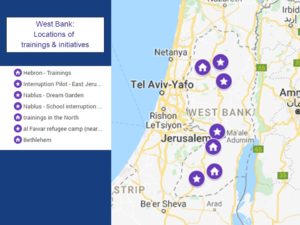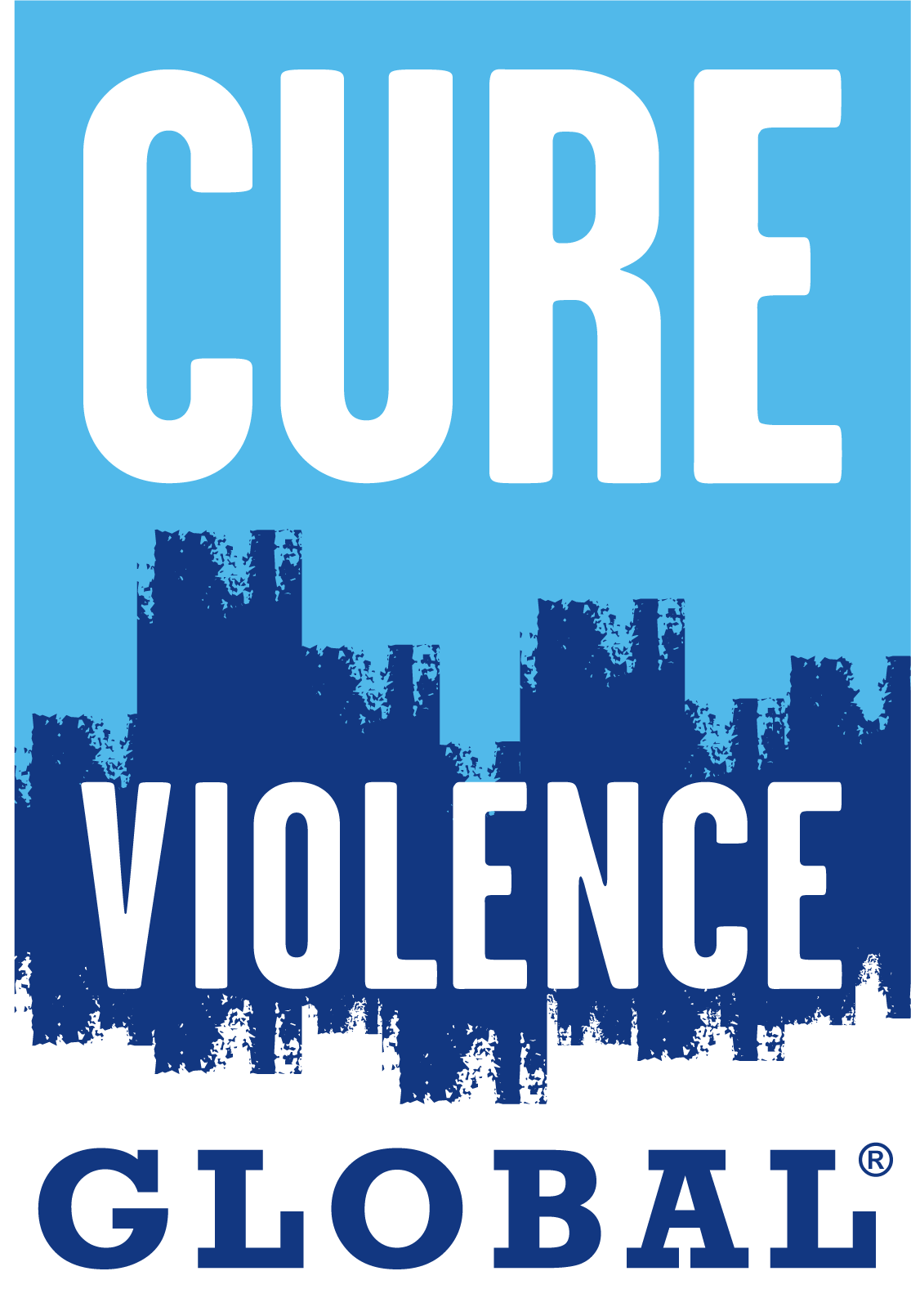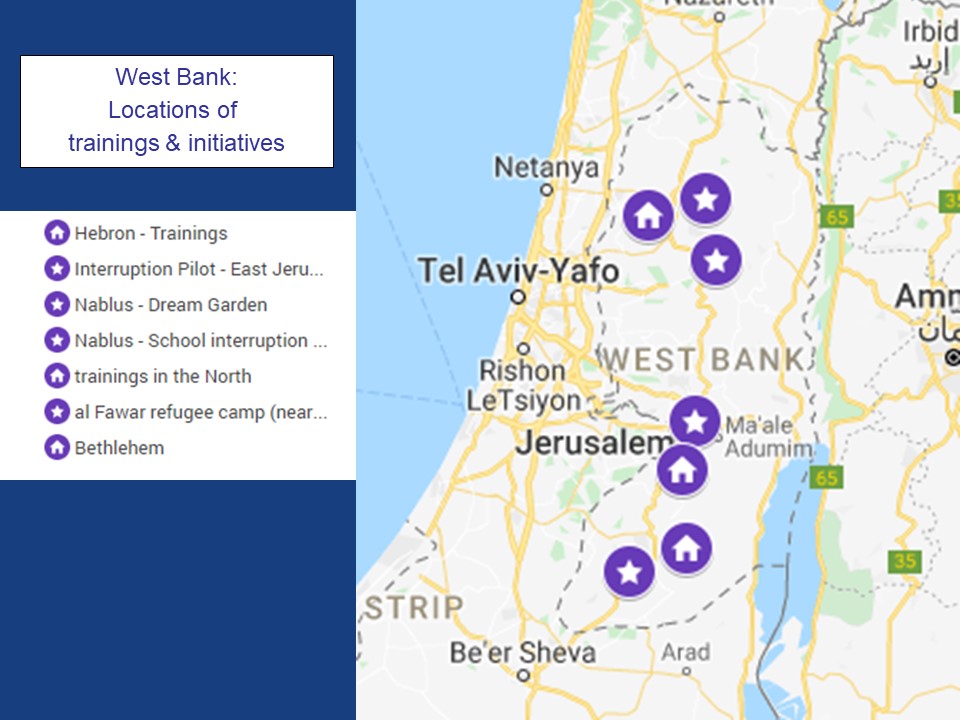Experiencing violence further increases violent behavior among individuals and groups in the community, as well as creating an environment of constant instability, toxic stress, and anxiety, which can lead to severe mental health issues This has been well documented in US cities, and Cure Violence Global has written about all these factors previously.
Multiple studies also demonstrate the increase in violence in conflict and post-conflict situations, specifically in the context of the West Bank.[1] Other studies show a relationship between exposure to ethnopolitical violence and increases in other types of violence, and that the greater the exposure, the greater the occurrences of community, school, and family violence as well as individual aggressive behavior.[2] According to a study conducted by the Palestinian Central Bureau of Statistics in 2019, 65 percent of children in the West Bank and Gaza Strip under 11 years old reported experiencing physical violence in the previous year, while 77 percent reported experiencing psychological violence. [3]
This increase in violence is occurring in a context and as a result of increasing conflict. The year 2022 was described as the deadliest in the West Bank in nearly two decades, according to the United Nations records. Experts and analysts alike expect more violence to occur in the year ahead. [4] [5] Already, more than one Palestinian has been killed every day in the first month of 2023, on track to double the tragic rate of lethal violence reported in the West Bank last year.[6]
Throughout the previous years, most of the recorded incidents of violence took place in cities such as Jenin, and Nablus. However, in the past couple of weeks, not only has the cycle of violence surged to levels not seen before, but to cities that are typically considered peaceful such as Jericho.
Violence in the West Bank is not only limited to direct or personal incidents, rather, structural, and institutional deprivation has built up over the years to affect virtually all areas of the Palestinians daily lives. The physical segregation and restrictions on the movement of Palestinians severely impacts the economy, the labor market, and on the social life of Palestinians. [7] [8]
CVG work in the West Bank
 By working on mitigating the consequences of the political violence in the Palestinian community, Cure Violence Global (CVG) is committed to limiting the spread of violence, focusing in the West Bank. In 2020-2021, CVG trained twenty women community activists from Jerusalem, Ramallah, Bethlehem, Hebron, and Nablus to use their influence in the community and among their networks to limit the spread of violence using the public health framework.
By working on mitigating the consequences of the political violence in the Palestinian community, Cure Violence Global (CVG) is committed to limiting the spread of violence, focusing in the West Bank. In 2020-2021, CVG trained twenty women community activists from Jerusalem, Ramallah, Bethlehem, Hebron, and Nablus to use their influence in the community and among their networks to limit the spread of violence using the public health framework.
Participants in the project joined from different fields and backgrounds including social activists, faith leaders, non-profit personnel, schoolteachers, doctors, and lawyers. The participants worked together to develop public education campaigns on social media to change the norms that support the use of violence against children, girls, and women.
Through the targeted social media campaigns, more than 40,000 people were reached from different geographical areas of the West Bank. After developing and implementing the campaigns, CVG provided an Active Bystander Intervention booster training to enhance the participants capacity to interrupt violence in their community. Participants reported that they feel more confident to intervene to stop violence incidents in their communities. One participant added ‘the training opened up new horizons for me and a path of thinking that I had not been aware of before’.
In 2016-2017, Cure Violence partnered with the Salam Institute to create a network of 23 trainers and violence interrupters from the cities of Hebron, Bethlehem, Nablus, Tulkarem, Qalqiliya, Jenin, Ramallah, and Jerusalem. These individuals were trained in the Cure Violence approach to interrupting violence and in skills related to Nonviolent Communication. In addition, the trainees implemented projects designed to put into practice what they had learned.
Two of the teams focused on interrupting violence in their communities. The Jerusalem team, for example, interrupted 15 potentially violent events and referred 32 people to vocational training or other services over the summer of 2017. The Hebron team interrupted 30 incidents of violence over a 2-week period in July 2017, benefiting 76 individuals. The Hebron team reported that many of the reasons for violence were day-to-day misunderstandings as opposed to being related to drugs, crime, or political reasons. During another intervention, the Hebron team reports interrupting 60 cases of violence.
In Bethlehem, Hebron, and the north (combined effort of participants from Nablus, Qalqiliya, Tulkarem, and Jenin), the participants carried out further trainings, bringing the Cure Violence approach to more than 200 additional youth and adults. Those trained by the Cure Violence volunteers included Palestinian security forces, UNRWA personnel, teachers and students at universities and lower-level schools, as well as individuals in refugee camps and in community centers.
In the closing session with the Cure Violence volunteers, they stated their commitment to continuing to use the approach to prevent violence in the West Bank and East Jerusalem and requested additional training and support going forward.
From the different training sessions throughout the past years, West Bankers agreed that such trainings helped them increase their sense of cohesion in the society, equipped them with the needed skills to be effective non-violent agents, and gave them hope that violence can be cured in their local communities.
Cure Violence in Somalia and South Africa
The work in the West Bank is one of CVG’s commitments to ending the spread of violence in the Middle East and Africa. In 2021, CVG has partnered with the International Organization for Migration (IOM) Somalia to conduct an assessment study in Baidoa and Kismayo to better understand the dynamics of violence between Al-Shabaab defectors and community members. Currently, CVG is working with IOM to identify the training and technical assistance needs to utilize the CVG’s approach to limit the spread of violence in the targeted areas.
Next Steps
All of this work has built upon previous work performed in the region, in Iraq, Syria nd Morocco. Cure Violence Global continues to look for opportunities to work in the Middle East and North Africa where we can be helpful providing a public health approach to preventing violence. There are many on going discussion and proposals and we will continue to provide updates on our progress.
———————————————————
[1] Dubow, Eric F., Paul Boxer, L. Rowell Huesmann, Khalil Shikaki, Simha Landau, Shira Dvir Gvirsman, and Jeremy Ginges. “Exposure to conflict and violence across contexts: Relations to adjustment among Palestinian children.” Journal of Clinical Child & Adolescent Psychology 39, no. 1 (2009): 103-116.
[2] Deepali M. Patel, Melissa A. Simon, and Rachel M. Taylor, Rapporteurs, Forum on Global Violence Prevention Board on Global Health, Institute of Medicine and National Research Council of the National, The National Academies Press, Washington, D.C., Released October 3, 2012
[3] https://palestine.unfpa.org/sites/default/files/pub-pdf/violence_survey_preliminary_results_2019.pdf
[4] https://www.washingtonpost.com/world/2022/12/29/palestinians-killed-west-bank-israel/
[5] https://www.cbsnews.com/news/israel-news-palestinians-whats-behind-escalating-violence-protests-netanyahu/
[6] https://www.vox.com/world/2023/1/27/23574943/48-hours-violence-israel-palestine-jerusalem-jenin-blinken-visit-explained
[7] Florence Oberholzer, “The Impact of the West Bank Wall on the Palestinian Labour Market”, International Development Policy | Revue internationale de politique de développement [Online], 6.2 | 2015, Online since 02 June 2015, connection on 07 February 2023. URL: http://journals.openedition.org/poldev/2002; DOI: https://doi.org/10.4000/poldev.2002
[8] https://www.europarl.europa.eu/meetdocs/2009_2014/documents/droi/dv/905_impact_/905_impact_en.pdf


